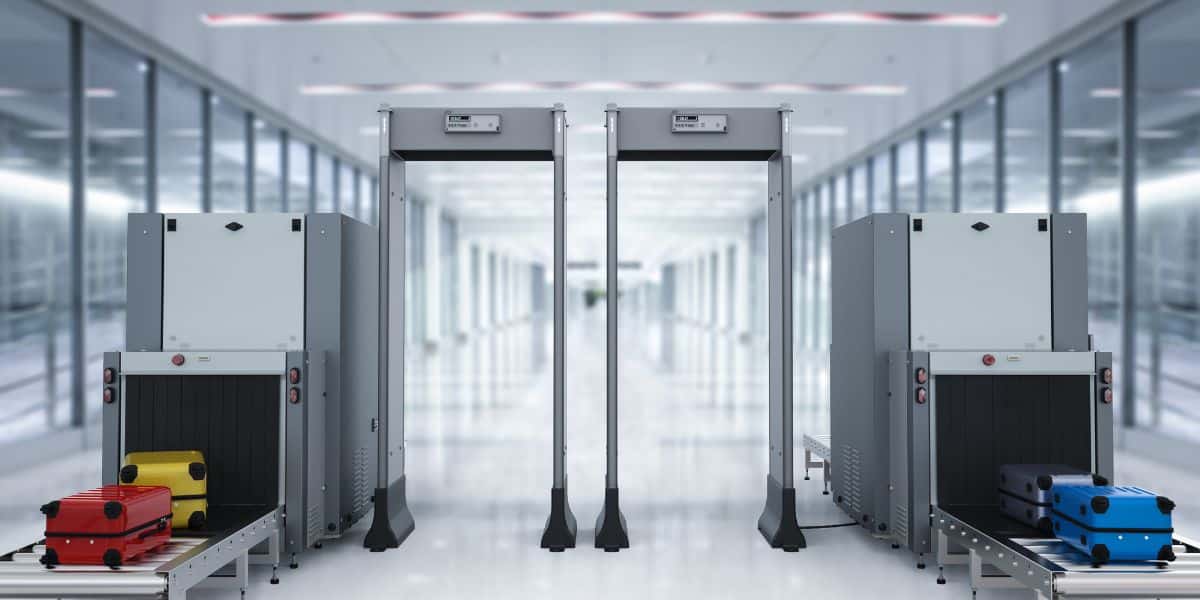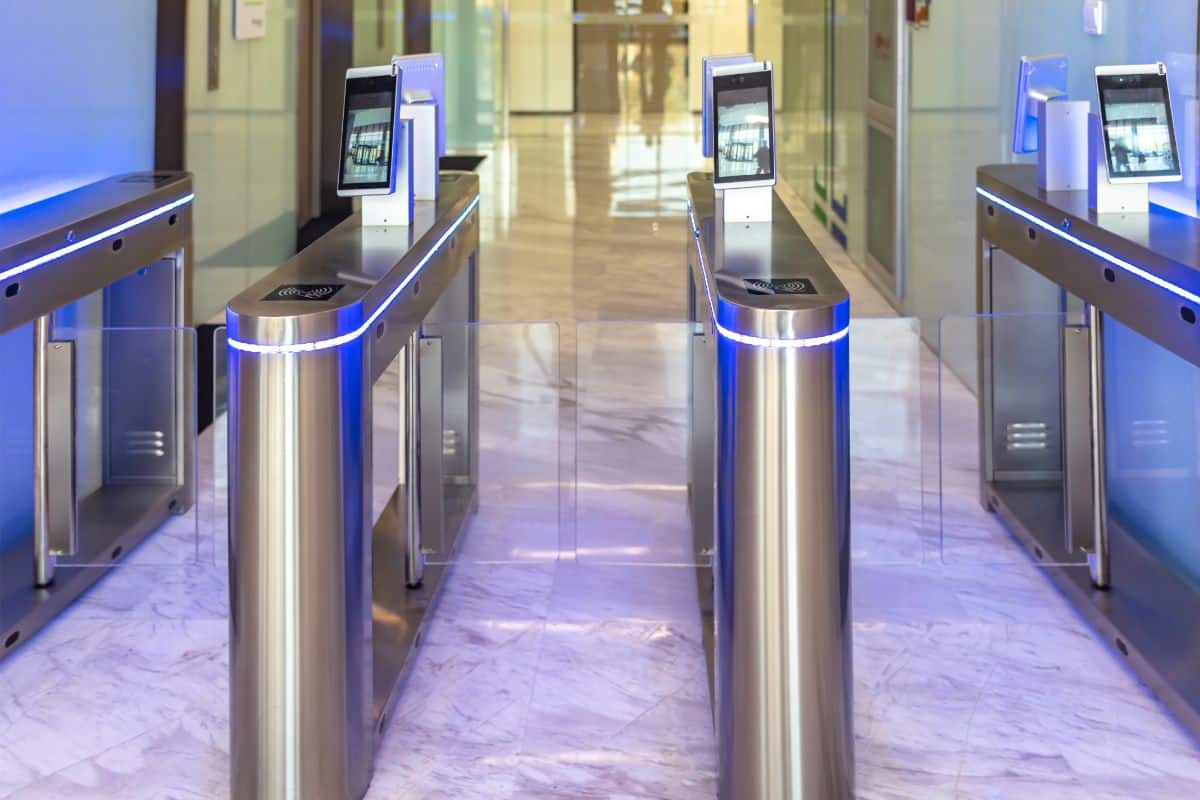Learn The Benefits of Access Control Vestibule to Improve Your Security
An access control vestibule is a crucial component in modern security systems. It provides a controlled entry point that improves the safety and security of various facilities. But what exactly is an access control vestibule, and why is it so important? In this blog post, we will explore the concept of access control vestibules, their benefits, and their significant role in safeguarding sensitive areas. Whether it is a corporate office, government building, financial institution, healthcare facility, or data center, understanding the value of an access control vestibule is essential for implementing an effective security strategy.
What is an Access Control Vestibule?
In today’s world, security is a top concern for businesses, institutions, and residential properties. One effective method to improve security is to implement an access control vestibule. So, it is essential to know what exactly an access control vestibule is and how it improves safety.
Understanding Access Control Vestibules
An access control vestibule is a secure entryway that acts as a buffer zone between the outside world and the inner areas of a building. This intermediate space is often called a security vestibule. It is designed to control and monitor who gains access to the premises. Typically, it consists of two sets of interlocking doors. The roles of those doors are given below:
- Outer Doors: These are the initial entry points that individuals encounter. Security measures such as keycards, biometric scanners, or access codes usually control access to these doors. The outer doors must close and lock before the inner doors can be activated, creating a secure intermediate space.
- Inner Doors: Once inside the vestibule, individuals must pass through the inner doors to enter the main building. These doors also require proper authorization to ensure a double layer of security.
How Does an Access Control Vestibule Work?
When someone approaches an access control vestibule, they first enter the outer set of doors. These doors will only open if the individual meets the required security credentials, such as a keycard, biometric scan, or access code. Once inside the vestibule, the outer doors must close before the inner doors open, which creates a controlled environment that improves security.
This dual-door system prevents unauthorized access and ensures that security personnel can verify individuals’ identities and intent before they enter the organization or company. By incorporating access control measures, businesses can significantly reduce the risk of unauthorized access and potential security breaches.

The Benefits of Access Control Vestibule
There are many benefits to using an access-control vestibule. Here are some of them.
1. Improvement of Security
The primary benefit of an access control vestibule is its heightened security level. These vestibules help prevent unauthorized entry and protect valuable assets by controlling access points. The dual-door system ensures that each individual passes through a secure, monitored area before accessing the interior. This setup reduces the likelihood of tailgating (unauthorized persons following authorized ones) and other security breaches, thereby safeguarding sensitive information and property.
2. Controlled Access
Organizations can manage who has access to specific areas, ensuring that only authorized individuals can gain entry with an access control system in that particular place. This level of control is fundamental in environments where different areas require different levels of security clearance. For instance, in a corporate office, employees might have access to general office spaces, but only certain personnel might be allowed into areas with sensitive data or valuable equipment. Organizations can improve security and operational efficiency by customizing access permissions.
3. Visitor Management
Access control vestibules facilitate better visitor and office security management by allowing security personnel to verify identities and purposes before granting access. This system streamlines the check-in process, making it more efficient and secure. Sometimes, Visitors may need to provide identification and state their purpose for entry, which can then be verified against pre-approved visitor lists. This improves security as well as the professionalism of the organization’s improving visitor management process.
4. Deterrent to Intruders
The presence of an access control vestibule acts as a significant deterrent to potential intruders. The dual-door system and stringent access requirements make unauthorized entry significantly more difficult. Hackers are less likely to try a breach When they know they have to work through several protection tiers. The visible presence of such strong security measures can discourage malicious activities and reduce the risk of security incidents.
5. Integration with Other Security Systems
Access control vestibules can be integrated with other security systems, such as surveillance cameras, alarm systems, and biometric scanners, to provide a comprehensive security solution. For example, surveillance cameras can monitor the vestibule, recording all entry attempts and providing valuable footage in case of an incident. Biometric scanners can add a verification layer, ensuring that only the rightful individuals can gain entry. This integration creates a multi-faceted security approach, improving overall protection and ensuring swift responses to security threats.
6. Improved Safety and Compliance
In addition to improving security, access control vestibules contribute to overall safety and compliance with regulatory standards. Many industries are subject to stringent security regulations that require controlled access to certain areas. Implementing access control vestibules helps businesses comply with these regulations to avoid potential fines and legal issues. Furthermore, in emergencies, such as fire evacuations, the vestibule system can be designed to ensure safe and efficient egress, improving overall safety for occupants.
The Importance of Access Control Vestibules in Commercial Properties
Access control vestibules play a crucial role in improving security across the organization. Their ability to regulate and monitor entry points makes them indispensable in several high-security environments. Here, the impotence or significance of access control vestibules in different sectors:
Corporate Offices
In corporate offices, access control vestibules are crucial for ensuring that only employees and authorized visitors can access sensitive areas. These vestibules help protect intellectual property, confidential business information, and valuable equipment. Companies can use this system to prevent unauthorized individuals from gaining access to areas such as executive offices, research and development departments, and server rooms. This not only improves security but also promotes a safer working environment for employees.
- Enhanced Employee Safety: Access control vestibules ensure that only vetted individuals can enter the premises, protecting employees from potential external threats.
- Protection of Proprietary Information: By restricting access to critical areas, companies can safeguard their trade secrets and proprietary information, essential for maintaining a competitive edge.
- Efficient Visitor Management: Access control vestibules streamline visitor management by verifying the identity and purpose of each visitor’s entry.
Government Buildings
Government buildings often contain sensitive information and conduct critical operations, which is why security is a top priority. Access control vestibules in these facilities help to protect against unauthorized access and ensure that only authorized personnel can enter secure areas.
- National Security: Access control vestibules prevent unauthorized entry and contribute to the overall security and stability of government operations.
- Protection of Sensitive Documents: These vestibules ensure that classified documents and sensitive information are only accessible to authorized individuals, reducing the risk of data breaches.
- Controlled Access to Restricted Areas: Government facilities often have multiple levels of security clearance and access control vestibules that help to manage and enforce these restrictions effectively
Financial Institutions
Financial institutions, such as banks, handle large amounts of money and sensitive financial data. Access control vestibules are essential in preventing unauthorized access to vaults, safes, and secure areas, protecting financial assets and customer information.
- Security of Financial Assets: Vestibules ensure that only authorized personnel can access areas where money and other valuable assets are stored.
- Protection of Customer Data: Financial institutions can safeguard customer information from unauthorized access and potential data breaches by restricting access to sensitive data storage areas.
- Deterrence of Criminal Activities: The presence of access control vestibules deters potential criminals and reduces the likelihood of theft and fraud.
Healthcare Facilities
The security and privacy of patient records and medical storage areas are paramount in healthcare facilities. Access control vestibules help ensure compliance with these standards by regulating who can enter specific areas.
- Patient Privacy: It will Ensure that only authorized personnel can access patient records, which helps to maintain confidentiality and complies with privacy regulations.
- Safety of Medical Supplies: Healthcare facilities can prevent unauthorized individuals from accessing medications and other critical supplies by restricting access to medical storage areas.
- Controlled Access to Sensitive Areas: Some areas, such as operating rooms, laboratories, and pharmacies, require strict access control, which vestibules effectively provide.
Data Centers
Data centers are the backbone of modern digital infrastructure, housing critical data and systems. Access control vestibules protect these facilities from unauthorized access and potential cyber threats.
- Protection of Critical Infrastructure: Vestibules help safeguard the physical infrastructure of data centers and ensure that only authorized personnel can access sensitive equipment and servers.
- Security of Sensitive Data: Data centers can protect against unauthorized data breaches and ensure the integrity of stored information by controlling access to data storage areas
- Compliance with Security Standards: Many data centers must comply with stringent security regulations and access control vestibules help meet these requirements by providing an additional layer of security.
Conclusion
An access control vestibule is vital in improving the security and integrity of various facilities. These vestibules ensure that only authorized individuals can access sensitive areas by providing a controlled entry point and rigorous verification processes. Whether implemented in corporate offices, government buildings, financial institutions, healthcare facilities, or data centers, an access control vestibule is pivotal in protecting valuable assets and sensitive information. Investing in these secure entryways is not only a proactive measure but a necessary step towards comprehensive security and peace of mind. As security concerns continue to develop, the importance of access control vestibules will only grow, making them an indispensable component of any strong security strategy.


